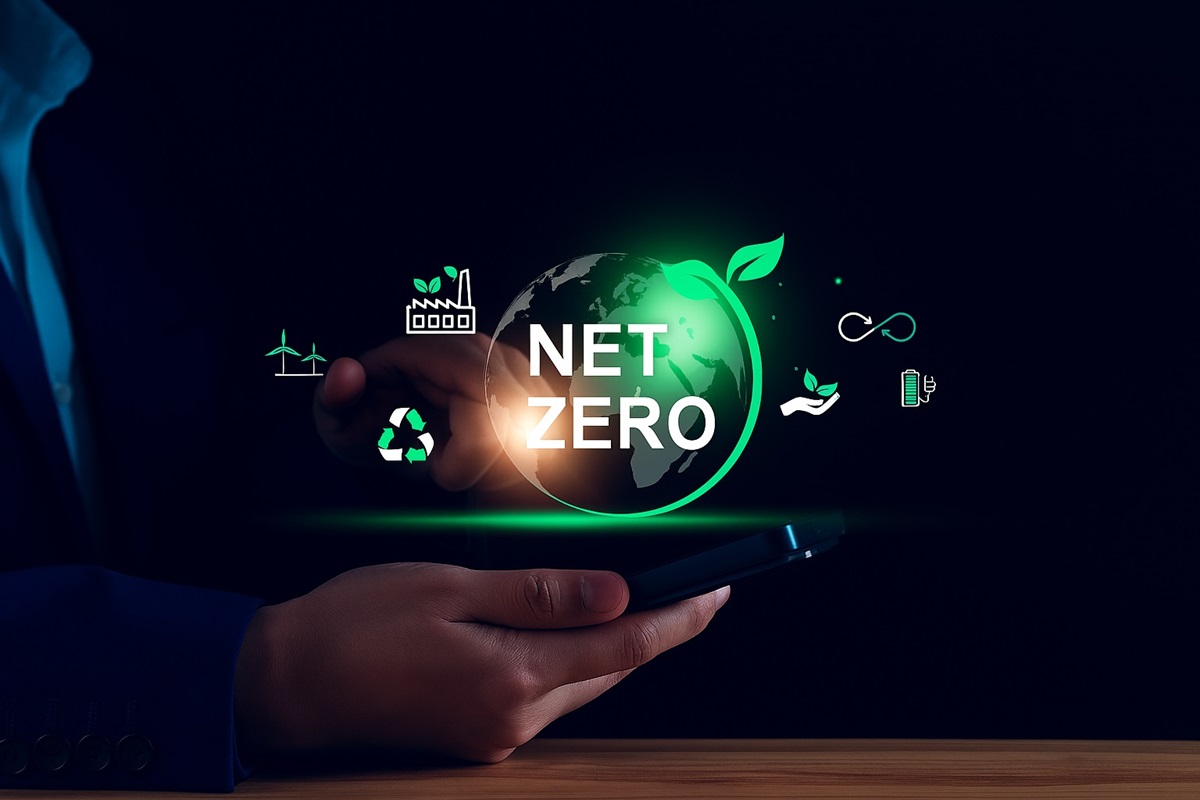Investing in a Decarbonized Future: Navigating Net Zero Investment Opportunities

The planet is facing an unprecedented crisis, but within this challenge lies one of the most significant investment opportunities of our time. A global consensus is solidifying around the imperative of achieving net zero greenhouse gas (GHG) emissions by mid-century, aiming to limit global warming to 1.5°C. This ambitious goal is not merely an environmental aspiration; it’s a profound economic transformation that is reshaping industries, redefining value, and creating entirely new markets. For investors, understanding and engaging with this shift is no longer optional.
Net zero investing is about more than just “doing good”; it’s about aligning your portfolio with the future economy. It involves directing capital towards companies, technologies, and infrastructure that actively reduce emissions or remove carbon from the atmosphere, while engaging with or strategically divesting from high-emitting assets to drive their decarbonization. This isn’t just a subset of traditional ESG (Environmental, Social, Governance) investing; it’s a more prescriptive, outcome-oriented approach focused squarely on climate impact. This article will explore why net zero investing is a strategic imperative for long-term value creation and portfolio resilience, delving into the drivers behind this monumental shift, key investment opportunities across various sectors, various investment vehicles, strategies for assessing climate risk, and common challenges faced by investors navigating this burgeoning green economy.
- 1. The Irreversible Shift: Why Net Zero is an Investment Imperative
- 2. Mapping the Green Economy: Key Investment Sectors for Decarbonization
- 3. Beyond Conventional Wisdom: Investment Vehicles & Frameworks for Net Zero
- 4. Future-Proofing Portfolios: Assessing Climate Risk & Opportunity
- 5. Navigating the Green Maze: Challenges and Best Practices for Net Zero Investors
- 6. The Long Game: The Future of Net Zero Investing
- Conclusion: Investing Today for a Resilient Tomorrow
- Frequently Asked Questions (FAQs) About Net Zero Investing
- Q1: What is the core difference between ESG investing and net zero investing?
- Q2: What are some of the most promising sectors for net zero investments?
- Q3: How do green bonds contribute to a decarbonized future?
- Q4: What is “transition finance,” and why is it important for achieving net zero?
- Q5: How can investors identify and avoid “greenwashing” in net zero claims?
1. The Irreversible Shift: Why Net Zero is an Investment Imperative
The momentum towards a decarbonized future is undeniable, driven by a confluence of powerful forces that are reshaping financial markets:
- Scientific Imperative & Growing Urgency: The Intergovernmental Panel on Climate Change (IPCC) reports consistently underscore the urgency of deep, rapid, and sustained GHG emission reductions. This scientific consensus provides the bedrock for global climate targets, demanding swift action from all sectors, including finance.
- Mounting Regulatory Pressure: Governments worldwide are translating climate goals into concrete policies. From the EU Green Deal and the US Inflation Reduction Act (IRA) to national carbon pricing mechanisms and mandatory climate-related financial disclosure mandates (like TCFD and ESRS in Europe), regulations are making high-carbon activities increasingly costly and risky while incentivizing green investments.
- Technological Readiness & Cost Reductions: The dramatic fall in the cost of renewable energy technologies, particularly solar and wind, has made them competitive, often cheaper, than fossil fuels in many regions. This technological leap has spurred massive investment and accelerated deployment.
- Shifting Consumer & Corporate Demand: Consumers are increasingly demanding sustainable products and services, while a growing number of corporations are setting ambitious net zero targets and demanding decarbonization across their supply chains. This creates significant market pull for green solutions.
- Long-Term Financial Performance: A growing body of evidence suggests that companies with robust climate strategies and strong sustainability performance often exhibit competitive or even superior financial returns over the long term, making them attractive to investors seeking resilient portfolios.
- Risk Mitigation: Investors are increasingly recognizing the dual threat of climate risk: physical risks (e.g., extreme weather events impacting assets) and transition risks (e.g., policy changes, technological obsolescence, and shifting market demand impacting valuations of carbon-intensive assets). Aligning with net zero helps mitigate these growing risks.
2. Mapping the Green Economy: Key Investment Sectors for Decarbonization
The journey to a decarbonized future presents investment opportunities across virtually every sector as industries transform and new ones emerge:
- Renewable Energy Generation & Infrastructure: This remains the bedrock of decarbonization.
- Solar & Wind: Continued massive investment in utility-scale and distributed generation. Global renewable energy capacity additions are expected to average over 400 GW/year through 2028 (IEA).
- Geothermal, hydropower, and bioenergy: important complementary sources.
- Enabling Technologies: Smart grids, grid-scale battery storage (the utility-scale storage market is poised for significant growth), and transmission infrastructure.
- Energy Efficiency & Smart Solutions:
- Smart Buildings: Technologies for optimizing energy consumption in commercial and residential buildings (IoT, energy management systems, advanced HVAC, insulation). Buildings account for roughly 30% of global emissions.
- Industrial Efficiency: Process optimization, waste heat recovery, and electrification of industrial processes.
- Sustainable Transportation:
- Electric Vehicles (EVs) & Charging Infrastructure: Investment across the entire value chain, from battery manufacturing to extensive charging networks. Global EV sales continue to surge.
- Green Hydrogen in Transport: Emerging opportunities in heavy-duty trucking, shipping, and aviation.
- Sustainable Aviation Fuels (SAFs): Investment in the production technologies for alternative aviation fuels.
- Carbon Capture, Utilization, and Storage (CCUS) & Carbon Dioxide Removal (CDR):
- CCUS: Critical for decarbonizing hard-to-abate industries like cement, steel, and chemicals. Scaling of CCUS projects is vital.
- Direct Air Capture (DAC): An emerging, high-cost technology for directly pulling CO₂ from the atmosphere, crucial for residual emissions.
- Nature-Based Solutions: Investment in afforestation, reforestation, and regenerative agriculture practices that enhance natural carbon sequestration.
- Green Hydrogen Ecosystem: Production (electrolyzers powered by renewables), infrastructure (pipelines, storage), and a wide range of end-use applications in industry and power generation. Global electrolyzer capacity is expected to grow exponentially.
- Circular Economy & Resource Efficiency: Businesses focused on waste reduction, advanced recycling, sustainable materials, and industrial symbiosis to minimize resource use and emissions.
- Sustainable Agriculture & Land Use: Regenerative agriculture practices, precision farming, and technologies for reducing methane emissions from livestock.
3. Beyond Conventional Wisdom: Investment Vehicles & Frameworks for Net Zero
Investors seeking to align their portfolios with decarbonization have a growing array of options:
- Green Bonds/Climate Bonds: These fixed-income instruments are specifically designed to finance environmentally sound projects, offering transparency on the use of proceeds. The green bond market has surged, surpassing $500 billion annually.
- ESG Investing & Thematic Funds: While ESG (Environmental, Social, Governance) investing is broader, net zero investing is increasingly integrated into ESG strategies, moving beyond simple screening to active alignment with decarbonization pathways. Dedicated thematic funds focus on specific green sectors like clean energy, sustainable infrastructure, or water.
- Private Equity & Venture Capital: These vehicles are crucial for funding early-stage climate tech innovations and scaling up new solutions. Significant VC funding has flowed into climate tech in recent years, signaling strong investor confidence in emerging technologies.
- Listed Equities: Investors can identify publicly traded companies with robust net-zero strategies, credible decarbonization plans, and innovative green solutions across all sectors, from utilities to manufacturing to technology.
- Active Ownership & Engagement: Rather than simply divesting from high-emitting companies, many institutional investors are using their influence as shareholders to actively engage with management, pushing for more ambitious decarbonization targets and transparent reporting.
- Transition Finance: This emerging category focuses on funding high-emitting companies that have a credible, verifiable plan to decarbonize their operations. It’s distinct from “green” finance but equally critical for achieving real-world emissions reductions by transforming existing industries.
4. Future-Proofing Portfolios: Assessing Climate Risk & Opportunity
Effective net zero investing goes hand-in-hand with robust climate risk assessment:
- Understanding Climate Risks:
- Physical Risks: The direct, tangible impacts of climate change on assets and operations, such as damage from extreme weather events, supply chain disruptions due to resource scarcity, or changes in temperature affecting infrastructure.
- Transition Risks: The risks arising from the global shift to a low-carbon economy. These include policy risks (e.g., new carbon taxes, stricter regulations), technological risks (e.g., disruptive innovations making existing assets obsolete), market risks (e.g., changing consumer preferences, shifts in demand), and reputational risks for companies perceived as climate laggards.
- Leveraging Disclosure Frameworks:
- TCFD (Task Force on Climate-related Financial Disclosures): Provides a widely adopted framework for consistent, decision-useful climate-related financial risk disclosures, helping investors evaluate corporate resilience.
- SBTi (Science Based Targets initiative): Companies setting verifiable emissions reduction targets aligned with the 1.5°C goal are increasingly attractive to investors, signaling a credible commitment to decarbonization and long-term viability.
- Portfolio Carbon Footprinting: Investors are increasingly using methodologies to measure the carbon intensity of their portfolios, identifying areas of high exposure and opportunities for decarbonization.
- Identifying Green Opportunities: Beyond mitigating risks, this assessment helps pinpoint companies that are not only adapting but innovating, becoming solution providers, or leading their sectors in decarbonization, thereby capturing significant future market share.
5. Navigating the Green Maze: Challenges and Best Practices for Net Zero Investors
While the opportunities are vast, net-zero investing presents its own set of complexities:
- Combatting Greenwashing: A significant challenge is distinguishing genuine net zero commitments from misleading or superficial claims. Investors need robust methodologies, transparent reporting, and third-party verification to avoid investing in “green-washed” assets.
- Data Quality & Availability: A persistent hurdle is the lack of standardized, high-quality, and granular emissions data, particularly for Scope 3 (value chain) emissions, making comprehensive assessment difficult.
- Long-Term Nature of Returns: Many net-zero investments, especially in large-scale infrastructure or emerging technologies, require significant upfront capital and may have longer payback periods than traditional investments.
- Policy & Regulatory Uncertainty: Shifting government policies and regulatory landscapes can impact the economic viability and risk profile of certain green investments, requiring investors to stay agile.
- Market Volatility: Emerging green sectors, while promising, can sometimes be subject to market hype and subsequent volatility, demanding careful due diligence.
- The “Just Transition” Imperative: Investors must also consider the social dimension, ensuring their investments contribute to a “just transition” that protects vulnerable communities and workers impacted by the shift away from fossil fuels, fostering equitable job creation.
6. The Long Game: The Future of Net Zero Investing
The trajectory for net zero investing is clear: it is moving from a niche segment to a core tenet of mainstream finance.
- Mainstreaming Decarbonization: Leading institutional investors are increasingly integrating net-zero strategies across their entire portfolios, recognizing it as a fundamental part of fiduciary duty.
- Systemic Approach: There’s a growing recognition that climate risk is a systemic financial risk, requiring a portfolio-wide, rather than just asset-level, approach to risk management and value creation.
- Innovation in Financial Products: We will see continued development of new investment vehicles, green indices, insurance products, and derivatives linked to climate performance, further enabling capital allocation.
- Digitalization and AI in ESG: Advanced analytics, artificial intelligence, and big data will play an increasingly vital role in improving climate data analysis, risk assessment, impact measurement, and identifying optimal investment pathways.
- Continued Policy Evolution: Governments will continue to refine and expand policies designed to accelerate the net zero transition, constantly creating new investment opportunities and shifting market dynamics, rewarding proactive investors.
Conclusion: Investing Today for a Resilient Tomorrow
The global pivot towards a decarbonized future is not merely an environmental undertaking; it is the definitive economic transformation of our era. Net zero investing stands at the nexus of this shift, offering unparalleled investment opportunities for those who recognize its strategic imperative. It’s about proactively positioning portfolios for resilience and long-term success in a world fundamentally reshaping its energy, industrial, and societal systems.
For financial professionals, institutional investors, and individual investors alike, the time to critically assess your portfolio’s alignment with net zero is now. Engage with companies on their decarbonization plans, rigorously analyze climate risks, and actively seek out the immense opportunities presented by the burgeoning green economy. The future of finance is inextricably linked to the future of our planet. Investing in a decarbonized future is not just about impact; it’s about securing enduring value and driving prosperity for generations to come.
Frequently Asked Questions (FAQs) About Net Zero Investing
Q1: What is the core difference between ESG investing and net zero investing?
A: ESG investing generally involves considering environmental, social, and governance factors in investment decisions. Net zero investing is a more specific and outcome-oriented approach, focusing explicitly on aligning portfolios with the global goal of achieving net zero greenhouse gas emissions, often by prioritizing deep decarbonization and engaging with high emitters on their transition plans.
Q2: What are some of the most promising sectors for net zero investments?
A: Promising sectors include renewable energy generation (solar, wind), energy efficiency solutions (smart buildings, industrial optimization), sustainable transportation (EVs, charging infrastructure), carbon capture and removal technologies, green hydrogen, and circular economy solutions.
Q3: How do green bonds contribute to a decarbonized future?
A: Green bonds are fixed-income instruments specifically designed to finance environmentally beneficial projects, such as renewable energy installations, energy efficiency upgrades, and sustainable transportation initiatives. They provide a transparent mechanism for investors to directly fund projects that contribute to decarbonization.
Q4: What is “transition finance,” and why is it important for achieving net zero?
A: Transition finance involves providing funding to high-emitting companies that have a credible, verifiable plan to decarbonize their operations. It’s crucial because it enables the transformation of existing carbon-intensive industries, which are essential for real-world emissions reductions, rather than just investing in already green sectors.
Q5: How can investors identify and avoid “greenwashing” in net zero claims?
A: Investors can avoid greenwashing by conducting thorough due diligence, looking for transparent and consistent reporting (e.g., TCFD-aligned disclosures), verifying claims with third-party certifications, and prioritizing companies with robust, science-based emissions reduction targets (like those validated by SBTi) rather than vague promises or over-reliance on offsets.



